tags: researchblogging.org, Macaw Wasting Disease, myenteric ganglioneuritis, proventricular dilatation disease, Bornaviridae, avian bornavirus, negative strand RNA viruses, pan-viral microarray, ViroChip
One pair of the Little Blue (Spix's) Macaw, Cyanopsitta spixii.
This species is extinct in the wild and its captive population consists of roughly 70 to 100 individuals.
Image: Fundação Parque Zoológico de São Paulo (São Paulo Zoo), Brasil.
For more than 30 years, a mysterious disease, known as proventricular dilatation disease (PDD), has sent chills of terror down the spines of bird lovers because it has been killing captive parrots. In fact, the Little Blue (Spix's) Macaw, Cyanopsitta spixii, one of the world's rarest and most endangered bird species, may become extinct due to PDD. But fortunately for this species, and all other birds, it appears that the causative agent of PDD has finally been identified: a virus that is new to science.
According to a paper that will be published next week in the Journal of Virology, a large international team of research scientists, veterinarians and doctors identified this new agent as a type of bornavirus, a family of negative-stranded RNA viruses that cause encephalitis in horses and livestock. The team, led by postdoctoral fellow, Amy Kistler, has also designed a diagnostic test that detects this newly discovered virus, which they named Avian Bornavirus (ABV). Their diagnostic test will allow veterinarians to control the spread of this disease.
"This discovery has potentially solved a mystery that has been plaguing the avian veterinary community since the 1970s," said molecular biologist Joseph DeRisi who, with his scientific partner, Don Ganem, MD, are both professors and Howard Hughes Medical Investigators at the University of California San Francisco.
The DeRisi Laboratory is part of the California Institute for Quantitative Biosciences, known as QB3. DeRisi Lab developed and patented the ViroChip, a high-throughput screening technology that uses a DNA microarray to test viral samples. In 2003, the ViroChip made its scientific debut by recovering the virus that causes Severe Acute Respiratory Syndrome, or SARS. Currently, the ViroChip is used to diagnose and monitor the progression of human viral diseases, such as HIV/AIDS. In honor of this innovation, DeRisi was awarded the MacArthur "Genius" Award.
PDD, originally known by a variety of names such as "Macaw Wasting Disorder" or "Macaw Fading Syndrome," was first described in 1978 in macaws that had been imported into the United States and Germany. Originally, it was thought that only macaws developed this disorder, but later it was found that more than 50 species of parrots along with members of five other avian taxonomic orders are susceptible. Due to the epidemiology and other characteristics of the disorder, it was long thought that PDD was caused by a virus.
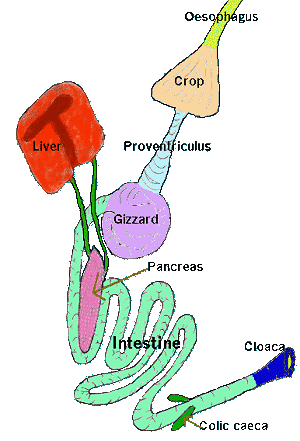 PDD causes nervous system disorders in adult wild and captive psittacines and other birds throughout the world. It interferes with the ability to swallow and to digest food, causing the proventricular walls to become thin and fragile, leading to progressive weight loss and diminishing body condition. Often, these symptoms are accompanied by neurologic manifestations such as a lack of coordination or seizures. The disease typically results in premature death, usually due to proventricular rupture. According to the researchers, PDD is widely considered to be the greatest threat to captive breeding of parrots.
PDD causes nervous system disorders in adult wild and captive psittacines and other birds throughout the world. It interferes with the ability to swallow and to digest food, causing the proventricular walls to become thin and fragile, leading to progressive weight loss and diminishing body condition. Often, these symptoms are accompanied by neurologic manifestations such as a lack of coordination or seizures. The disease typically results in premature death, usually due to proventricular rupture. According to the researchers, PDD is widely considered to be the greatest threat to captive breeding of parrots.
To identify this virus, two PDD case-control series were collected independently on different continents and analyzed using the pan-viral microarray technology, ViroChip. These microarrays revealed a bornavirus hybridization signature in 62.5% of the PDD cases but in none of the controls. Ultra high throughput sequencing was utilized to recover the complete viral genome sequence from one of the virus-positive PDD cases (figure 2A);
Figure 2: Avian bornavirus (ABV) genome sequence recovery and comparative analysis to Borna disease virus (BDV) genomes.
A. Bornaviridae genome schematic. Grey bar at base, non-segmented negative sense viral RNA (vRNA) of Bornaviridae genome; coordinates of major sequence landmarks highlighted below. Green bars and dashed lines, transcription initiation sites (TISs); red bars, transcription termination sites. Distinct ORF encoding transcription products and the gene products they encode are diagrammed above: TIS1 transcripts encoding nucleocapsid (N) gene, pink; TIS2 transcripts encoding phosphoprotein (P) and X genes, green; TIS3 transcripts encoding the matrix (M), glycoprotein (G) and polymerase (large or 'L') gene, blue. Exons, thick solid black lines; introns, thin solid black lines; dashed black lines, 3'ends of transcripts generated transcription termination read-through; shaded boxes, location of ORFs in transcripts; reading frames for ORFs from multiple genes generated from TIS3 indicated at right. Array probes track, Bornaviridae oligonucleotide 70mer probes from the Virochip array. PCR primers track, primers generated for PCR follow up and screening of specimens in this study for detection of Bornaviridae species with expected product diagrammed below. vRNA RT-PCR track, overlapping vRNA clones and RACE products recovered directly from RNA extracted from crop tissue of a histologically confirmed case of PDD. Solexa reads track shows distribution of 33mer reads with at least 15bp sequence identity to recovered ABV genome sequence. Sequence identity with BDV genomes track shows scanning average pairwise nucleotide sequence identity (window size of 100 nucleotides, advanced in single nucleotide steps) shared between ABV and all BDV genome sequences in NCBI. A dashed line on the graph indicates 50% identity threshold for reference.
DOI: 10.1186/1743-422X-5-88.
This genome was phylogenetically analyzed and found to fall within the Bornaviridae family. These analyses revealed a bornavirus-like genome organization for this agent while at the same time revealing it to be quite different from other known Bornaviridae (figure 2B);
Figure 2: Avian bornavirus (ABV) genome sequence recovery and comparative analysis to Borna disease virus (BDV) genomes.
B. Phylogenetic analysis of ABV genome and the 4 representative BDV genome isolates. Neighbor-joining phylogenetic trees based on nucleotide sequences of the ABV genome sequence [GenBank:EU781967] and the following representative BDV genome sequences: H1766 [GenBank:AJ311523], V/Ref [GenBank:NC_001607], He/80 [GenBank:L27077], and No/98 [GenBank:AJ311524)] Scale bar, genetic distance.
DOI: 10.1186/1743-422X-5-88.
This is the first time that a first full-length bornavirus genome has ever been cloned directly from avian tissue. Phylogenetic analysis of the nucleotide sequence of several genes from 16 individual ABV isolates found there are at least 5 distinct ABV genetic subgroups (figure 3);
Figure 3: Comparison of sequences recovered from ABV PCR screening to 4 representative genetic isolates of BDV.
Neighbor-joining Phylogenetic tree of ABV nucleotide sequences recovered by PCR screening with ABV consensus primers for subsequences within the L gene (A), the N gene (B), or the M gene (C).
DOI: 10.1186/1743-422X-5-88.
These studies clearly demonstrate the existence of a group of remarkably diverse avian bornaviruses that are the likely candidates in the search for an etiologic agent of PDD. Not only that, but this study identifies an avian reservoir for bornaviruses but reveals that the bornaviridae encompass an unexpectedly genetically diverse group of viral types.
These data are very promising but the next step that the team must take before they can conclusively prove that ABV is the causative agent of PDD is to satisfy Koch's postulates. These postulates stipulate that the virus must be first be grown in a pure laboratory culture and second, that cultured virus must be used to experimentally infect healthy parrots, which then must manifest the typical symptoms of PDD. Last, after these parrots succumb to the disease, ABV must be isolated from these experimentally infected birds.
"This provides a very compelling lead in the longstanding search for a viral cause of PDD," Ganem said. "With the development of molecular clones and diagnostic tests for ABV, we can now begin to explore both the epidemiology of the virus and how it is linked to the disease state."
Source
Kistler, A.L., Gancz, A., Clubb, S., Skewes-Cox, P., Fischer, K., Sorber, K., Chiu, C.Y., Lublin, A., Mechani, S., Farnoushi, Y., Greninger, A., Wen, C.C., Karlene, S.B., Ganem, D., DeRisi, J.L. (2008). Recovery of divergent avian bornaviruses from cases of proventricular dilatation disease: identification of a candidate etiologic agent. Virology Journal, 5(1), 88. DOI: 10.1186/1743-422X-5-88.
- Log in to post comments

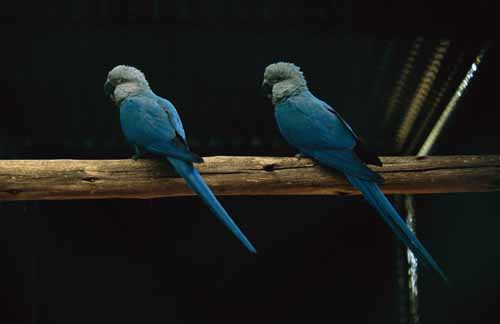
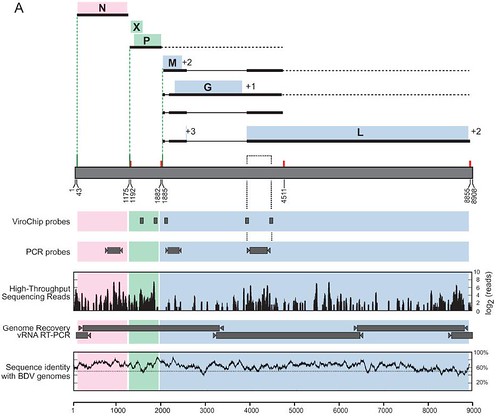

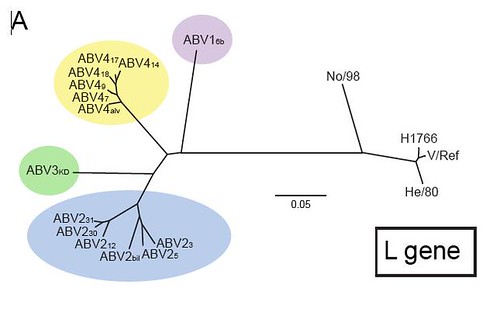
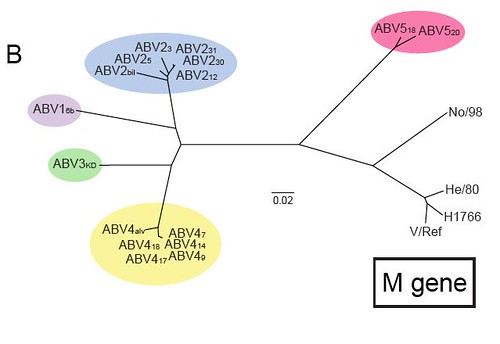
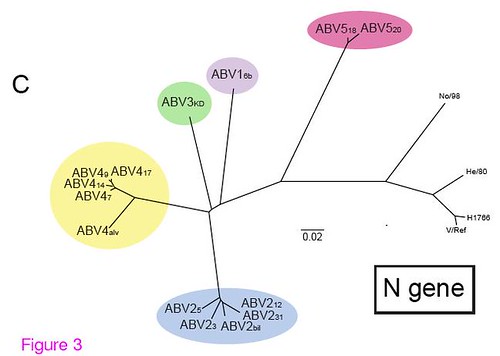
"cultured virus must be used to experimentally infect healthy parrots, which then must manifest the typical symptoms of PDD. Last, after these parrots succumb to the disease, ABV must be isolated from these experimentally infected birds."
Surely there is a better way. I understand the process and the reasoning, but this is a terrible disease to give healthy birds if other possibilities may exist.
Now that we have a possible culprit, are there protocols that appear to be helpful in slowing, stopping or treating BVD in rats or mice or other animals that might be applied to birds who are already sick, where success in slowing or stopping the illness could then provide further evidence of the virus while providing possible treatment for birds that are sick/ a means to help to birds that are purposefully infected? Seems to me I read about a few possibilities, but I don't know if they could be applied to birds.
What other way would you propose, Chardyspal? They're not even sure yet that this is the cause of PDD. This is the first time /anything/ has been isolated that is a real possibility and this has been the subject of a lot of research for years. It's awful to think of subjecting other birds to it, but this is definitely a case of the greater good being served. Having a known cause that can be tested for could quite literally be the difference between staying alive and going extinct for some species because of the risk of bringing new birds into aviaries.
Not that it makes it better, but I'm sure such testing would be done on something like budgies or cockatiels as opposed to species that are on the CITES list and/or hard to breed.
This is great news.
I hope that the results of this study will be confirmed and that it will be possible to develop a vaccine.
There has to be and must me a better way than infecting healthy birds. This is a horrible way for anything to die. Work on a treatmrnt for already sick birds, that have the new ABV strain. If the treatment works the same assumption can be made.
I lost a 6yr old b/g/macaw & I just lost a 2yr old b/gmacaw to this didease I have a senigeal that lived thru both of these incident of the other birds he shows symptom of larg volume stool but seems to be all so why are the macaws affected so badly & not survive & how is it transmitted how about chickens chicken farms got 1 rite down the street from me. I visited this farm to get straw. then I had purchased baby chicks. I think the first time I had gone to the farm was when about the time my first macaw got sick. maybe thats a good source of transmission. one of the chicks a rooster became lame with increased appetite just nearing full growth. & broad spectrium antibiotics & vitamines did not help. I put the chicken down & burned the carcus not knowing the cause of lameness. this farm is absolutely discusting with dead chickens & other birds dead all over that they just leave where they fall.